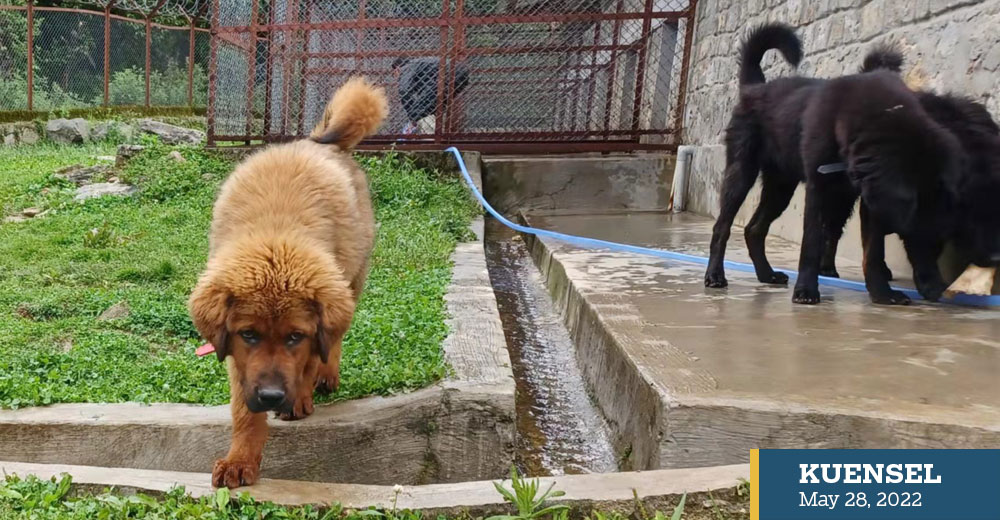Nima Wangdi
After the establishment of the National Mastiff Breeding Centre in Gasa in 2019, the Department of Livestock had reared nine puppies.
According to the department’s chief for research and extension division, Towchu Rabgay, they selected the best mastiffs in a dog competition held during the Highland Festival in Laya and reared them in the centre.
He said the mastiffs were brought from Soe, Lingzhi, Laya and Nubri. “A male and a female, both imported breeds, kept as pets in Thimphu were also purchased and taken to the centre.”
Towchu Rabgay said there are nine puppies and nine adults in the centre today.
The puppies are about five months old.
He said the nine adults gave birth to 18 puppies, but they selected only nine and kept in the centre. “Others were culled.”
He said the nine selected puppies are ‘F1’ generation (First Generation). “We will again breed these puppies with the local breed making sure that there is no inbreeding and this will give birth to ‘F2’ generation.”
According to the chief, inbred dogs are not sharp and ferocious, but are docile.
He said the dogs have to be ferocious, aggressive and affordable. “Yak herders can buy them from the centre to guard their yaks. The dogs should have the maximum utility for the herders.”
A livestock production officer, Kinley Rinchen, said there are mastiffs in the highlands of 10 dzongkhags, but the breed has degenerated over the years as they have crossbred with stray dogs.
“There are approximately 800 mastiffs in the highlands,” he said.
Towchu Rabgay said that the department, in collaboration with National Biodiversity Centre, is carrying out a genetic resource study of the dogs.
“They will look for peculiar characteristics of these dogs to be branded as Bhutanese mastiff,” he said.
Mastiffs conceive after they become a year old and whelp only once a year unlike other dogs.


